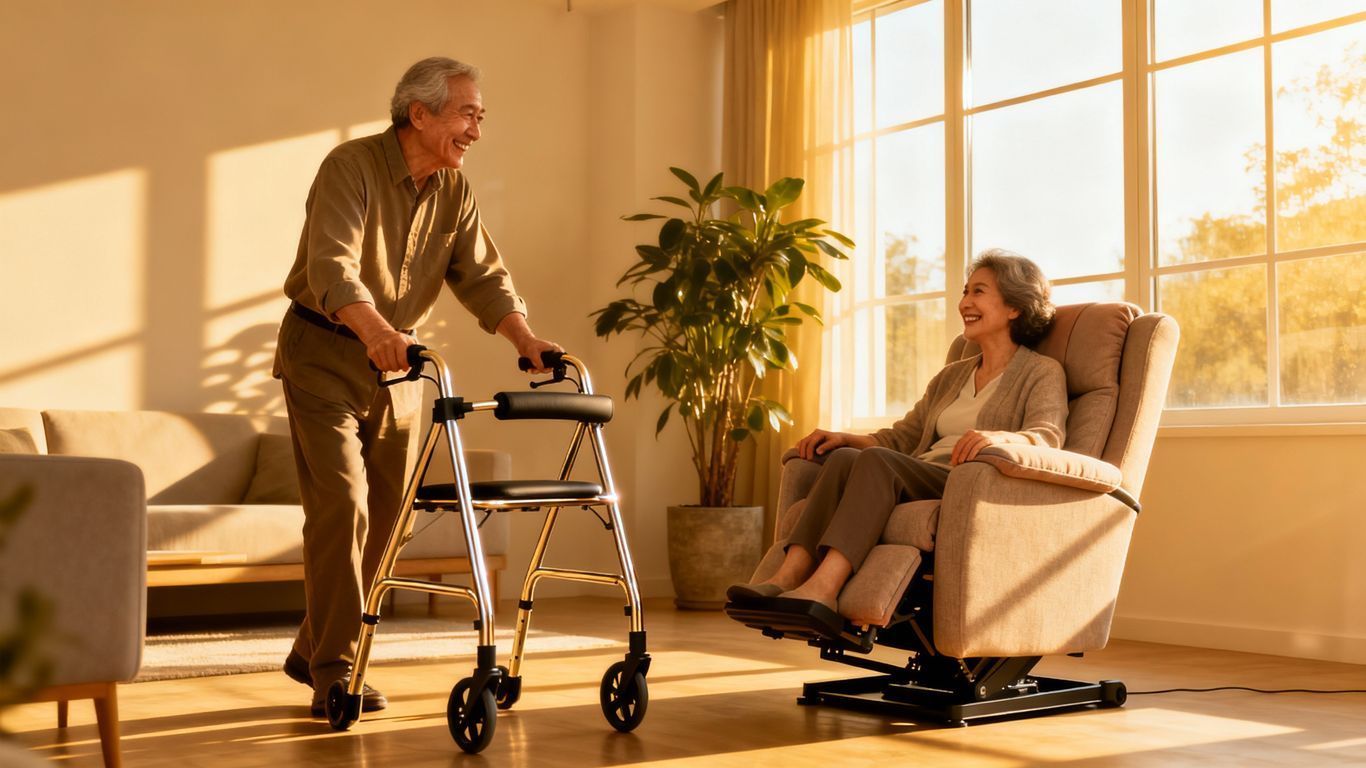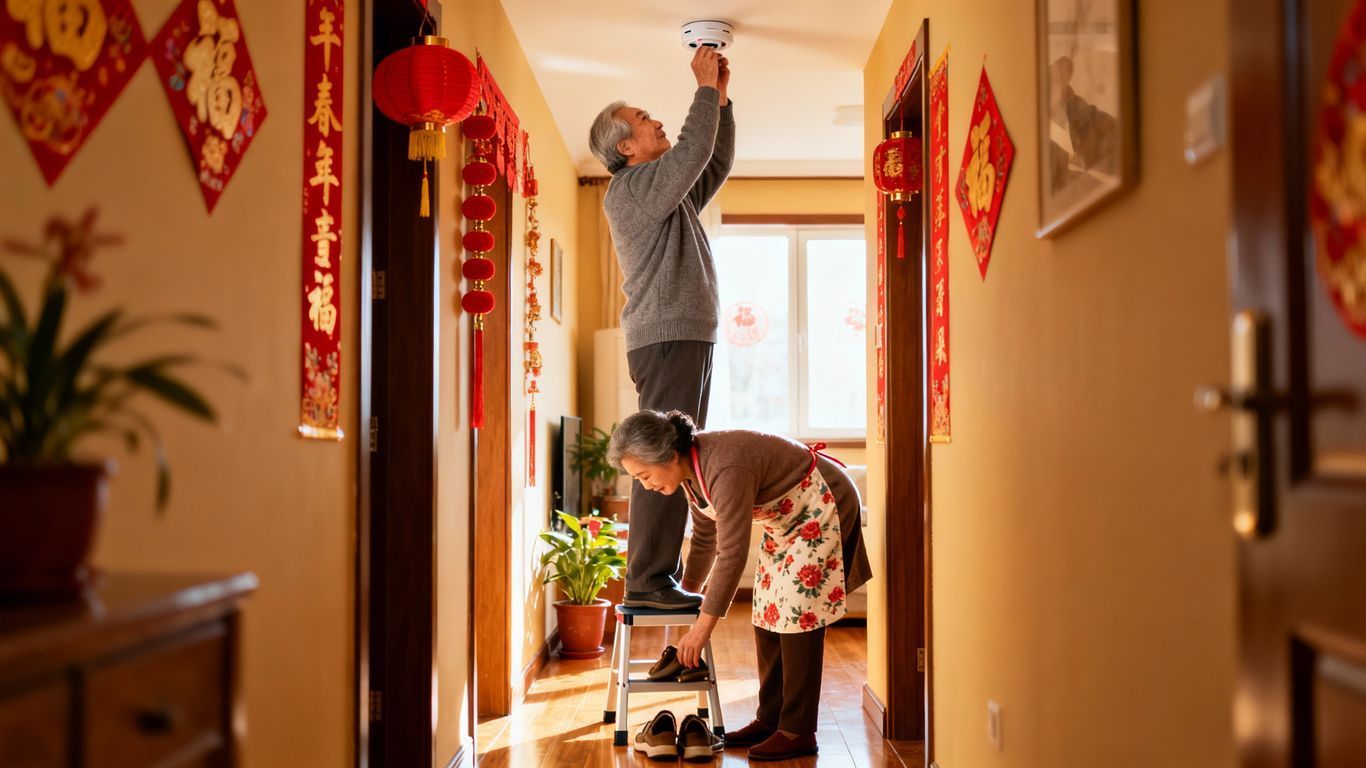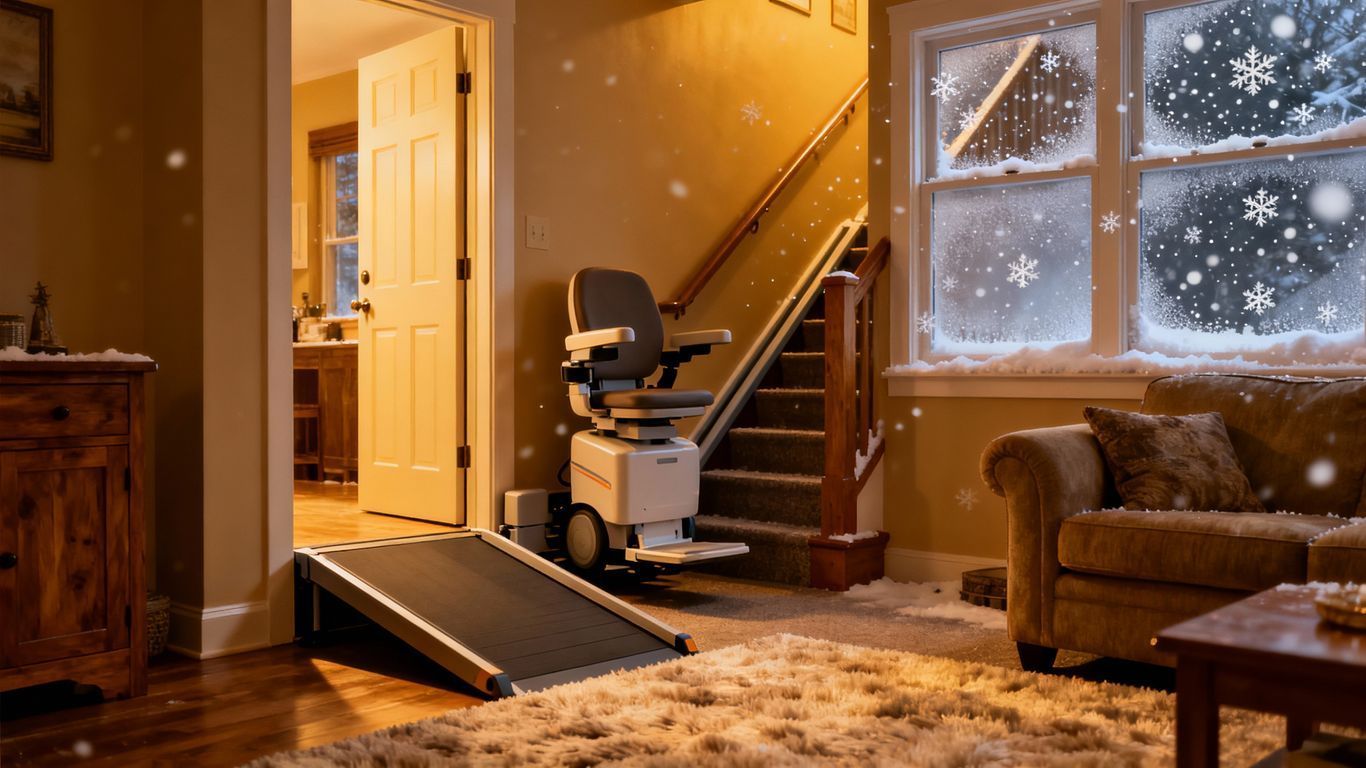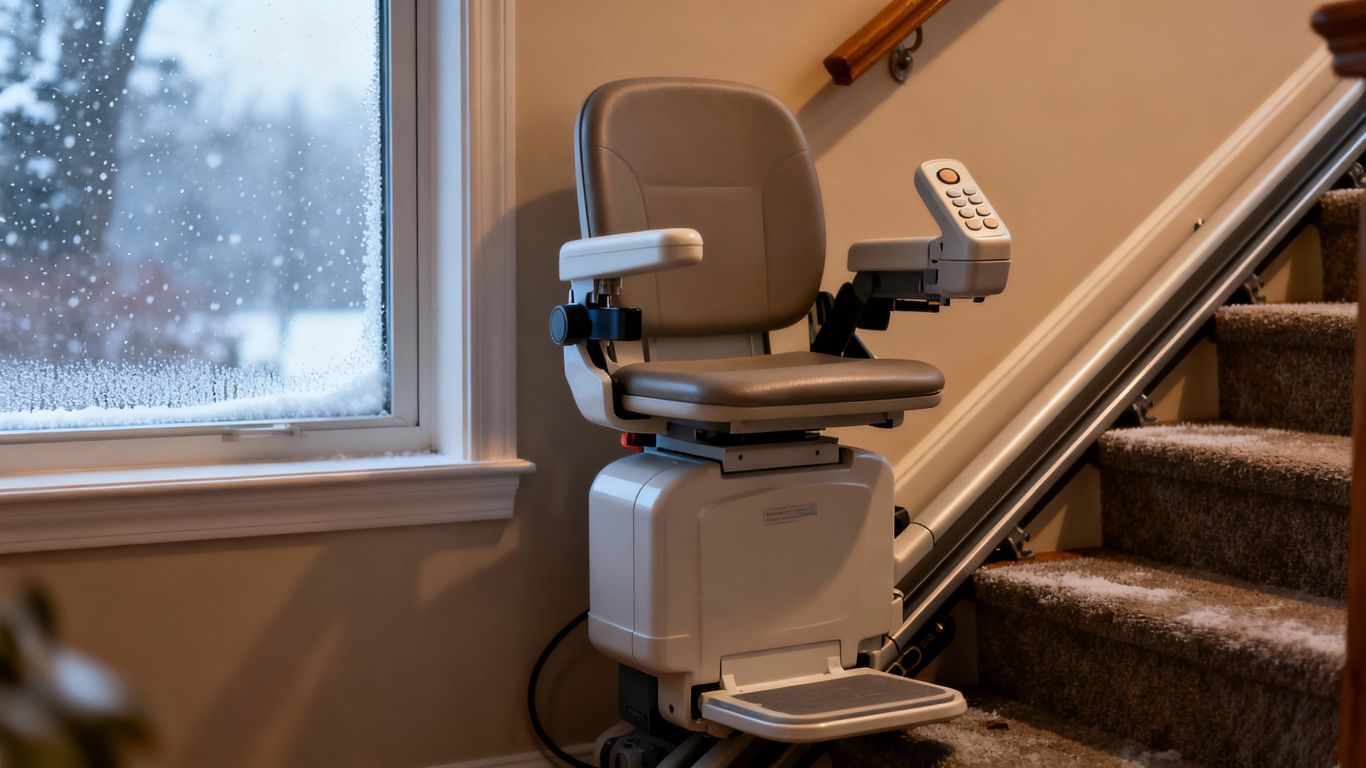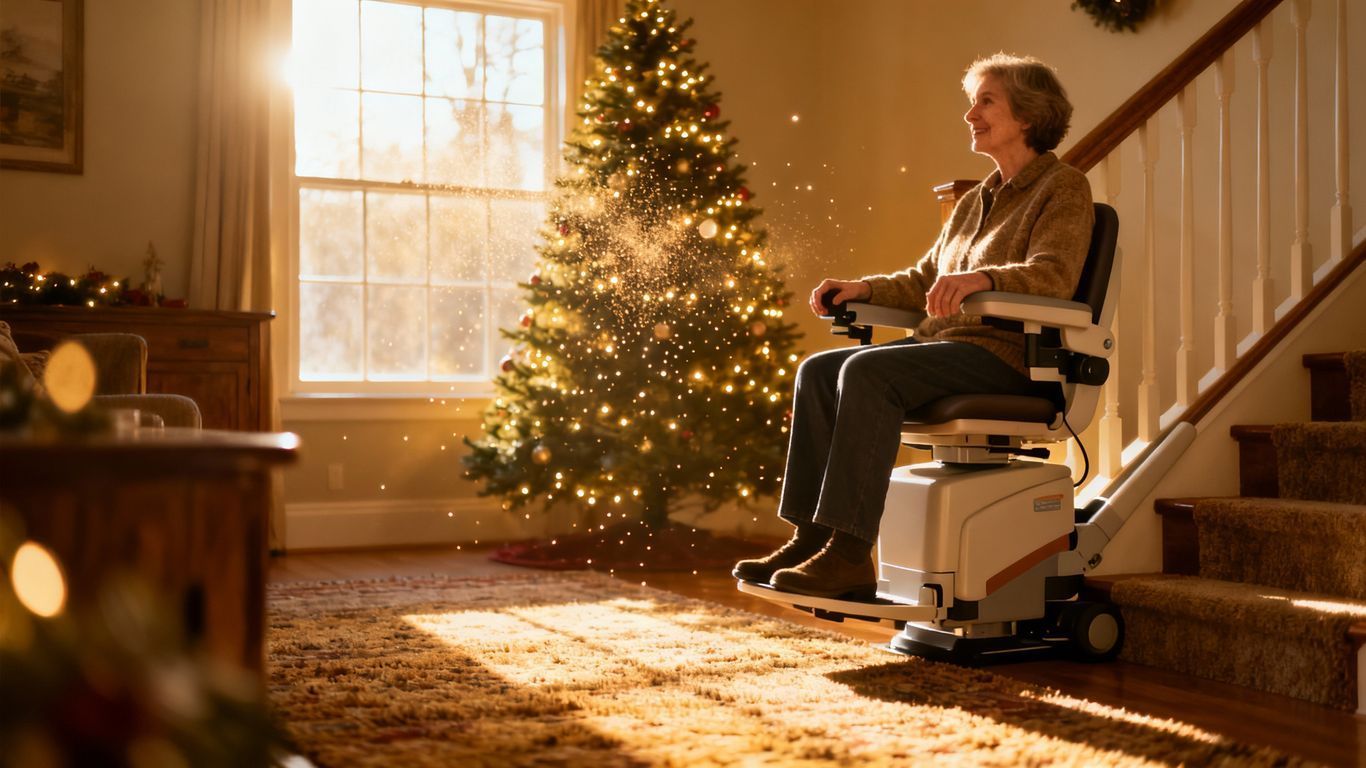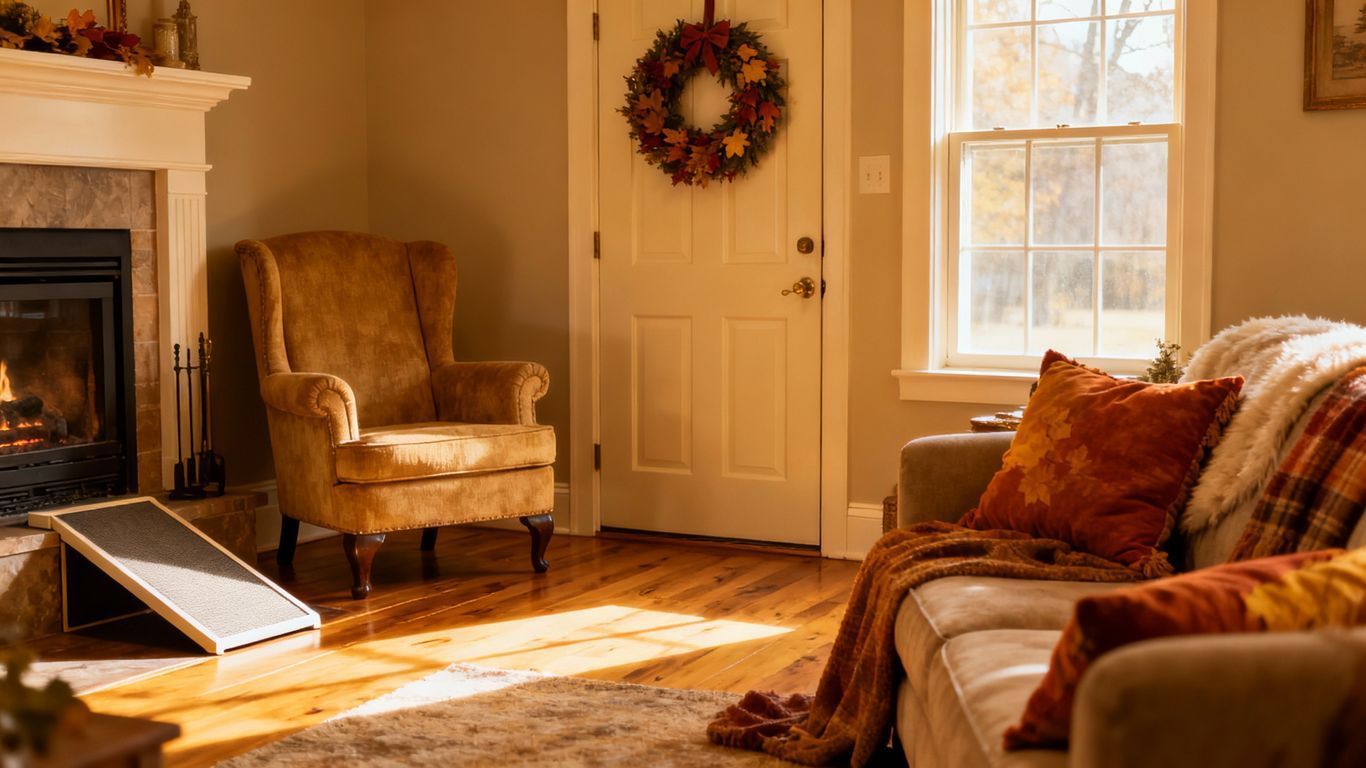Best Wheelchair Securement Systems for Your Vehicle in Chattanooga & North Georgia
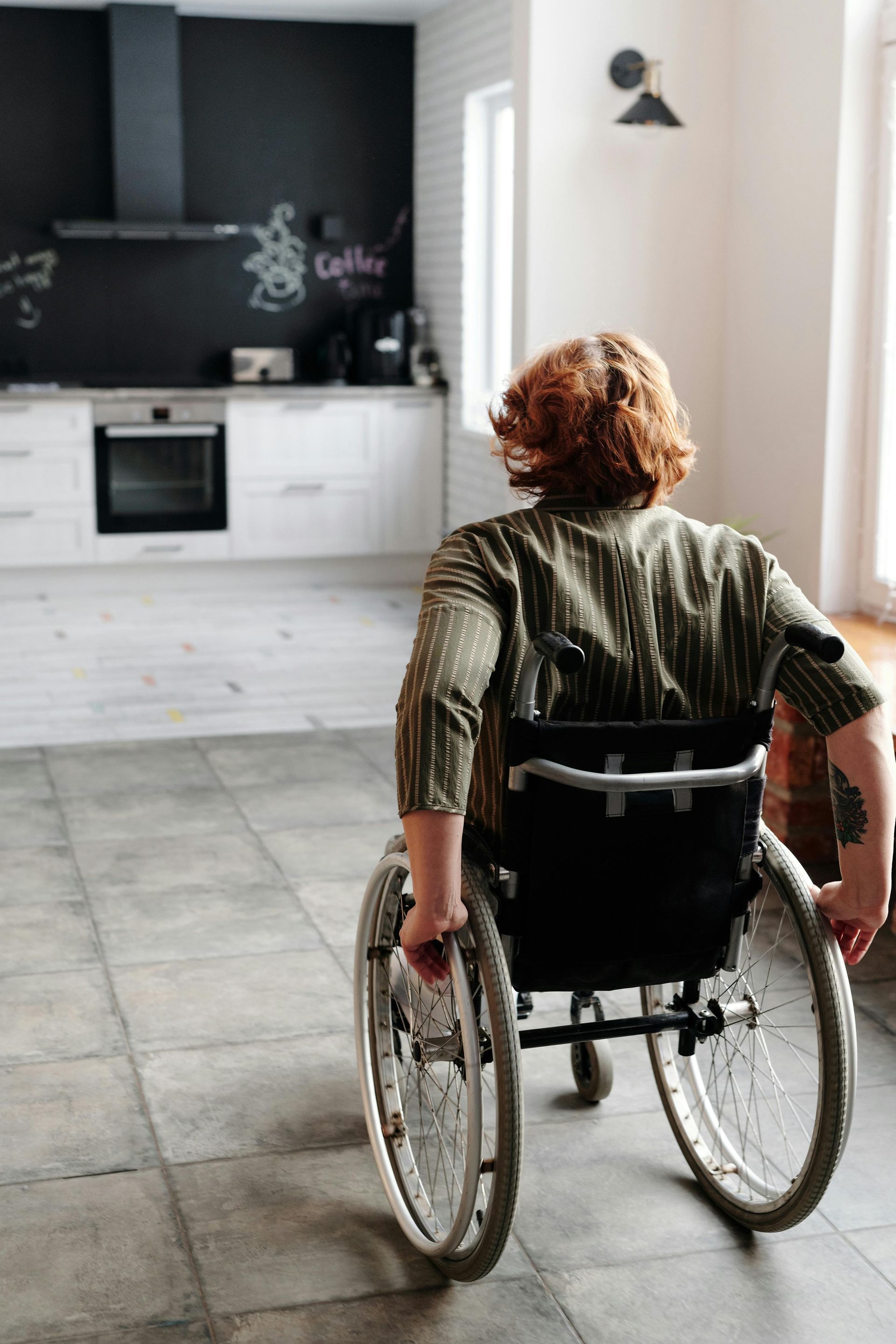
Getting around with a wheelchair means you need a safe ride. Especially if you're in Chattanooga or North Georgia, finding good wheelchair securement systems for your vehicle is a big deal. You want something reliable that keeps you secure on the road. This article looks at some of the top options available, helping you figure out what might work best for your needs.
Key Takeaways
- Different brands offer various types of wheelchair securement systems.
- Some systems are manual, while others are more automated.
- It's important to consider ease of use and safety features.
- Local providers in Chattanooga and North Georgia can help with installation.
- Researching each system helps you pick the right one for your vehicle and chair.
1. Q'STRAINT
Q'STRAINT is a big name in the world of wheelchair tiedowns. You've probably seen their stuff around. They're known for making systems that are pretty reliable and easy to use, which is a plus when you're dealing with something as important as keeping someone safe in a vehicle.
They offer a range of products, from basic retractor systems to more advanced electronic options. Here's a few things they focus on:
- Safety standards: Q'STRAINT aims to meet or exceed industry safety regulations.
- Ease of use: They try to design their products so that caregivers or users can operate them without too much hassle.
- Durability: Their systems are built to last, which is important for something used daily.
Q'STRAINT has been around for a while, and they've built a reputation for quality. They're not always the cheapest option, but many people feel the extra cost is worth it for the peace of mind. It's worth checking out their product line to see if they have something that fits your specific needs.
2. Sure-Lok
Sure-Lok is another big name in the wheelchair securement world. They've been around for a while, and a lot of people trust their products. They focus on safety and ease of use, which is super important when you're dealing with mobility equipment.
I think what sets Sure-Lok apart is their wide range of options. They've got everything from basic tie-down systems to more advanced, automatic locking mechanisms. This means you can find something that fits your specific needs and budget.
Here are a few things to consider about Sure-Lok:
- Durability: Their products are generally built to last, which is a big plus.
- Variety: As I mentioned, they have a ton of different options.
- Installation: Depending on the system, installation can be a bit tricky, so you might need professional help. Consider wheelchair van rentals from MobilityWorks if you need a temporary solution.
One thing I've heard from people is that Sure-Lok's customer service is pretty good. If you run into any issues, they're usually responsive and helpful. That's always a good sign when you're investing in something like this. Plus, their tie-down systems are known for being reliable.
3. EZ-Lock
EZ-Lock systems offer a different approach to wheelchair securement, focusing on a docking mechanism. Instead of using straps, the wheelchair is locked into a base that's installed in the vehicle. I've seen these in action, and they seem pretty convenient, especially if you're frequently getting in and out of the vehicle.
The EZ-Lock system aims to provide a secure and independent solution for wheelchair users.
Here's what I've gathered about EZ-Lock:
- It eliminates the need for manual tie-downs.
- It promotes independent mobility for wheelchair users.
- Installation requires professional fitting to ensure compatibility with both the wheelchair and the vehicle.
EZ-Lock systems can be a great option for those seeking a quick and easy securement method. However, it's important to consider the initial investment and installation requirements. Also, make sure your wheelchair is compatible with the EZ-Lock system before committing.
4. BraunAbility
BraunAbility is a pretty big name when you're talking about vehicle modifications for people with mobility challenges. They've been around for a while, and they're known for making things that are generally reliable. I think most people recognize the name, which says something about their reputation.
They offer a range of securement systems designed to keep wheelchairs safely in place during transit. It's not just about the securement itself, but also about the overall safety and ease of use. You want something that's easy to operate, but also something that you can trust to do its job.
Here are a few things to consider about BraunAbility's securement systems:
- Installation: How easy is it to install? Some systems might require professional installation, while others are more DIY-friendly.
- Compatibility: Does it work with your specific wheelchair model? Not all securement systems are universal, so you'll want to double-check.
- Ease of Use: How simple is it to secure and release the wheelchair? You don't want something that's a hassle to use every time.
BraunAbility's products often come with a higher price tag, but many people feel that the investment is worth it for the peace of mind and reliability that they offer. It's something to consider when you're weighing your options. They also have a pretty good warranty program, which is always a plus.
5. B&D Independence
B&D Independence focuses on creating vehicle modifications that allow people with mobility challenges to drive. They're not just about securement systems, but rather the whole driving experience. They aim to make it possible for individuals to regain or maintain their independence through driving.
B&D Independence offers a range of products, including:
- Hand controls
- Left foot accelerators
- Steering devices
- Wheelchair restraints
B&D Independence is committed to providing high-quality, reliable solutions that meet the unique needs of each driver. They understand that driving is more than just transportation; it's about freedom and control.
When considering B&D Independence, it's important to think about your specific driving needs and how their products can help you achieve them. Their focus is on driver-side solutions, so if you're looking for passenger securement, you might need to explore other options.
6. MobilityWorks
MobilityWorks is another big name in the mobility solutions world. They're not just about securement systems; they do a whole lot more. I think of them as a one-stop shop for pretty much anything you might need to make your vehicle more accessible.
They aim to provide the newest stuff in mobility equipment.
Here's what I've gathered about them:
- They offer a wide range of adaptive solutions, from turning and transfer seats to scooters.
- They focus on providing the latest innovations in mobility equipment.
- They also do vehicle modifications, like raised roofs and lowered floors.
MobilityWorks has locations all over, which is super convenient. It means you can probably find a local branch to get hands-on help and advice. Plus, they often have certified mobility consultants who can assess your specific needs and recommend the best solutions. It's always good to talk to someone who knows their stuff before making a big decision like this.
When you're looking at wheelchair securement systems, it's worth checking out what MobilityWorks has to offer. They might have something that perfectly fits your needs and your vehicle.
7. Ricon
Ricon is another big name in the mobility industry, and they're not just about securement systems. They make a whole range of products designed to make life easier for people with mobility challenges. When it comes to wheelchair securement, Ricon aims for safety and ease of use.
- Ricon offers both automatic and manual systems.
- Their products are designed to meet or exceed safety standards.
- They focus on creating user-friendly designs.
Ricon's securement systems are built with durability in mind. They understand that these systems are used daily, so they need to withstand wear and tear. This focus on quality can give users peace of mind, knowing their securement system is reliable.
8. VMI
I've seen VMI conversions around for a while, and they seem to focus on making vans more accessible. I think their securement systems are part of a bigger package, usually involving lowered floors and ramps. It's not just about tying down the wheelchair; it's about making the whole experience of getting in and out of the vehicle easier.
VMI's approach seems to be about integrating the securement system into the overall vehicle design. This can be a good thing, but it also means you're probably looking at a more involved (and expensive) conversion than just slapping on some straps.
Here's what I've gathered about VMI:
- They often work with specific vehicle models.
- Their systems are designed to be user-friendly.
- Installation is usually done by authorized dealers.
9. Freedom Motors
Freedom Motors is another company that focuses on making vehicles accessible. I think they're pretty well-known for their rear-entry conversions, which can be a good option if you're looking for something different than the side-entry setups you see most often. I've heard some people say they like the ramp angle better with rear-entry, but it probably just depends on your specific situation.
Here are a few things they're known for:
- Rear-entry wheelchair vans
- Customizable options
- Focus on affordability
Freedom Motors aims to provide accessible vehicles that don't break the bank. They understand that mobility solutions need to be within reach for more people, and that's a big part of their mission.
Lane Basington provided excellent assistance in helping a customer find the ideal mobility vehicle, enabling them to regain lost freedom. They also offer various securement systems to keep your wheelchair safe and secure during transport. It's worth checking them out to see if their approach fits your needs.
10. AMS Vans
AMS Vans is another company that focuses on making wheelchair accessible vehicles more affordable. They primarily sell modified vans, and while they might not specialize solely in securement systems, they do offer them as part of their vehicle packages.
Here's what you might expect from AMS Vans:
- Integrated systems: Securement systems are often installed as part of the van conversion process.
- Variety: They likely offer a range of securement options to suit different needs and budgets.
- Installation: Professional installation is usually included when you purchase a van from them.
AMS Vans aims to provide complete mobility solutions. This means they handle the vehicle conversion and the installation of necessary equipment like wheelchair securement systems, making the process easier for customers.
When considering AMS Vans, it's a good idea to ask about the specific securement systems they use and whether they meet your individual requirements. You'll want to make sure the adaptive equipment services are up to par.
Looking for a great deal on a wheelchair van? AMS Vans has a wide selection of new and used accessible vehicles. They offer different styles and features to fit your needs and budget. Don't miss out on finding the perfect ride. Check out their inventory today and see all the options available!
Wrapping Things Up
So, there you have it. Picking the right wheelchair securement system for your ride in Chattanooga and North Georgia doesn't have to be a huge headache. It's really about finding what works best for you and your situation. Think about how often you'll be using it, what kind of vehicle you have, and what feels most comfortable. There are lots of good options out there, and taking a little time to check them out can make a big difference. Safety is a big deal, and getting the right setup means you can get around with less worry. Just take it step by step, and you'll find what you need.
Frequently Asked Questions
What exactly are wheelchair securement systems?
These systems are special devices that hold a wheelchair firmly in place inside a vehicle. They keep the person in the wheelchair safe and prevent the chair from moving around, especially when the vehicle stops suddenly or turns.
Why do I need a wheelchair securement system?
It's super important for safety! If a wheelchair isn't properly secured, it could slide or tip over during travel. This could hurt the person in the wheelchair or even other people in the vehicle. These systems make sure everyone stays safe.
What kinds of securement systems are there?
There are a few main types. Some use straps that you manually attach, others are automatic systems where you just drive the wheelchair into a certain spot, and some are docking systems that lock the chair in place with a button. Each type has its own benefits.
How do I choose the right system for me?
When picking one, think about how easy it is to use, how safe it is, and if it fits your specific wheelchair and vehicle. Also, consider if you'll need help putting the wheelchair in place or if you can do it by yourself.
Can I get help learning how to use my new system?
Yes, absolutely! Many places that sell or install these systems also offer training on how to use them correctly. It's a good idea to get this training to make sure you're using the system as safely as possible.
Where can I buy these securement systems in Chattanooga or North Georgia?
You can find these systems at mobility equipment dealers, vehicle modification shops, and sometimes even through car dealerships that specialize in accessible vehicles. Many of the brands mentioned in this article also have local dealers in the Chattanooga and North Georgia area.

